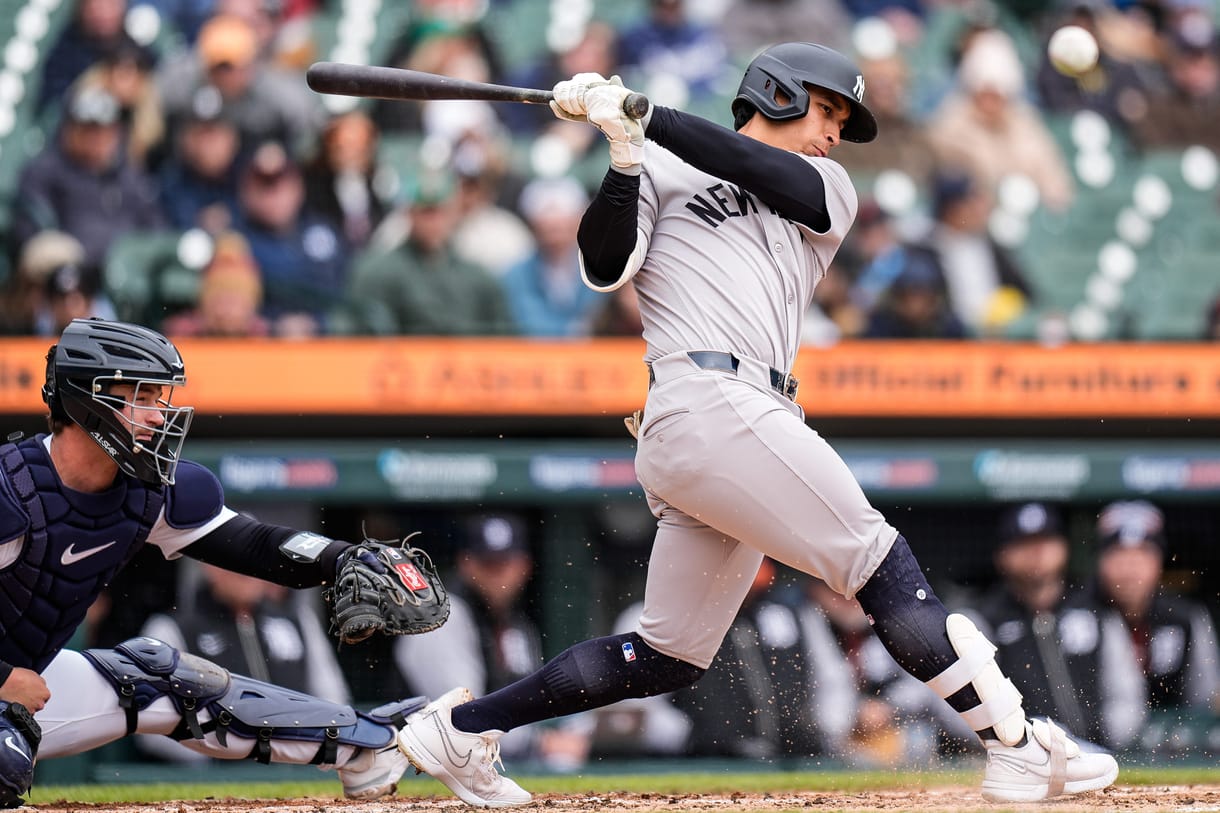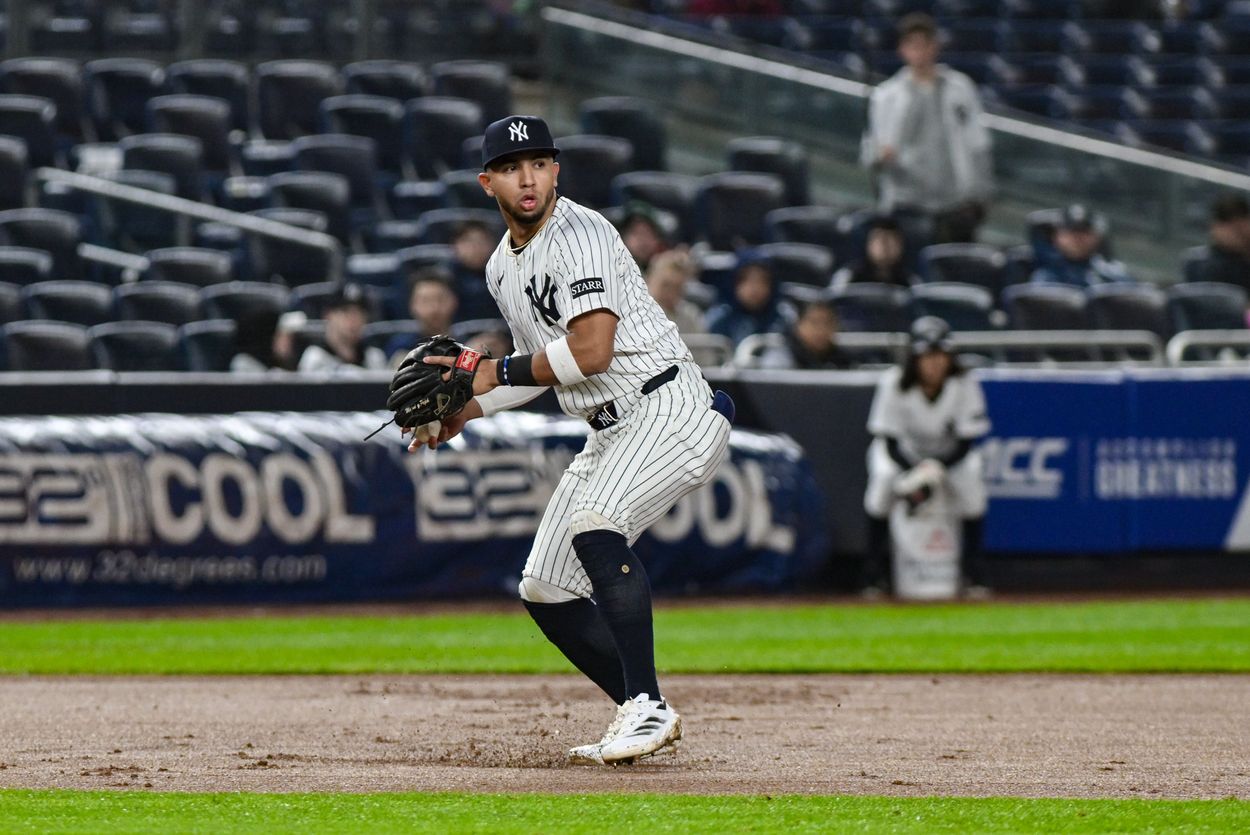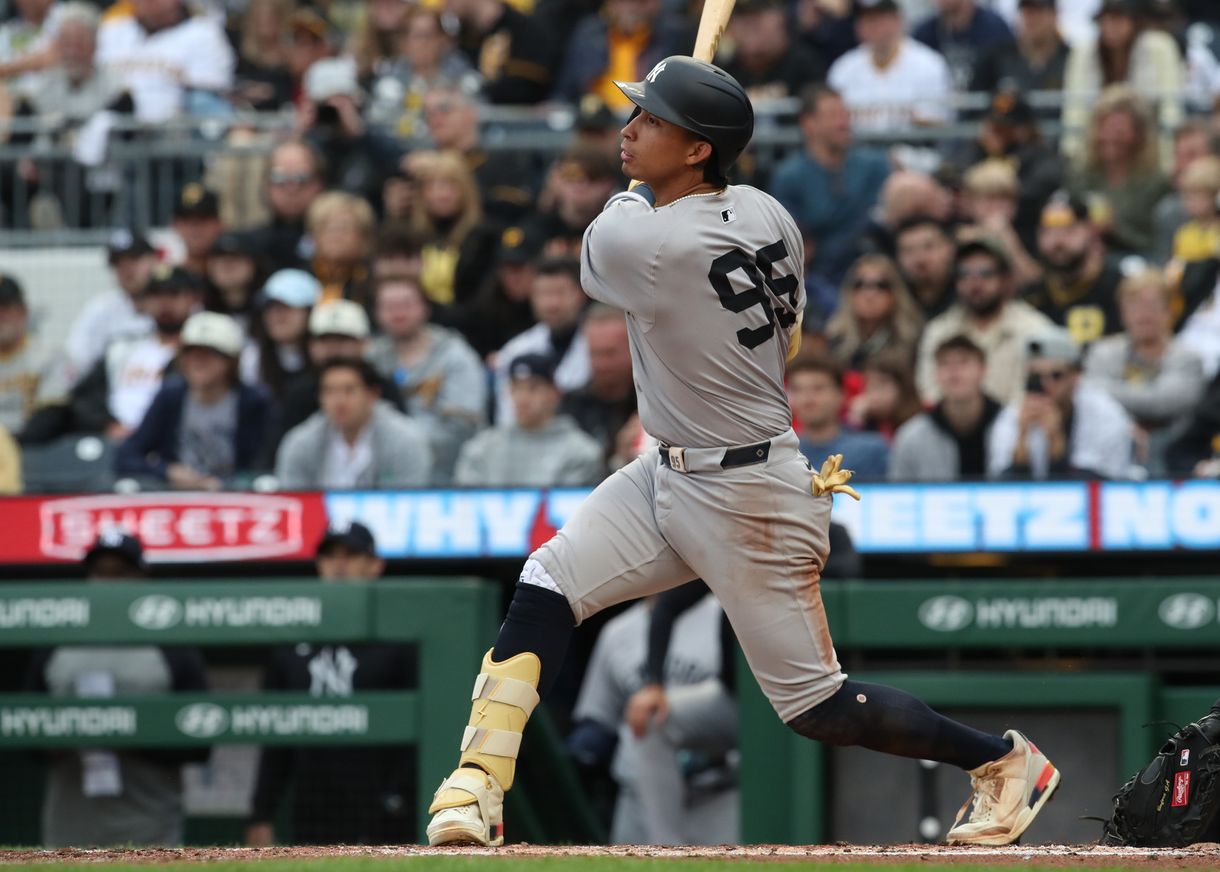
The New York Yankees have been managing a delicate balancing act in the infield, forced to improvise more than they’d like.
With key injuries piling up, they’ve had no choice but to rotate bodies and hope someone claims the second base job.
While third base is no longer an issue thanks to the return of Jazz Chisholm Jr., second base remains unsettled.
Veteran DJ LeMahieu has handled most of the workload, but he’s shown clear signs of offensive decline in recent years.
On Thursday, the Yankees started Oswald Peraza, who collected two hits but still hasn’t proven he can stick long term.

DJ LeMahieu and Oswald Peraza are sharing time
LeMahieu is no stranger to New York’s infield puzzle, but at 36 years old, his bat has betrayed him.
Meanwhile, Peraza has hung around for years as a depth piece, offering excellent defense but underwhelming offensive consistency.
His glove remains steady, but his presence in the batter’s box rarely sparks fear in opposing pitchers these days.
With both players rotating in and out, it’s clear the Yankees are testing to see who can handle the role.
At this point, the answer might simply be neither, at least not for a contending team chasing a championship window.
Brian Cashman will likely explore trade deadline options
General manager Brian Cashman knows this infield isn’t championship-caliber without upgrades, especially with second base still unresolved.
The Yankees are expected to explore infield targets at the July trade deadline to strengthen the weakest part.
But until then, the front office will have to rely on internal options and hope someone finally claims the job.
That includes keeping a close eye on Oswaldo Cabrera — even if his return is a long shot.

Oswaldo Cabrera eyes a possible late-season comeback
Cabrera, currently recovering from a fractured left ankle, hinted Thursday that he’s aiming for a possible return this year.
He told Yankees insider Gary Phillips, “I want to [play this season],” adding there’s only a “small possibility” it happens.
Before the injury, Cabrera was hitting .243 with a .322 on-base percentage, though his slugging sat at a meager .308.
His bat lacked pop, ranking near the bottom of the league in most power categories before he went down.
Still, Cabrera remains valuable because of his versatility — a switch-hitter who can play nearly every defensive position well.
Utility value makes Cabrera irreplaceable in key ways
Cabrera isn’t someone you build a lineup around, but he’s the kind of glue guy every winning roster quietly needs.
When a starter goes down, Cabrera can step in — shortstop one day, corner outfield the next, and never blink.
Think of him like duct tape for a roster — not flashy, but always there when something suddenly breaks mid-game.
His ability to hit lefty and make contact gives him just enough offensive relevance to support the offense.
If there’s even a slim chance he returns for the final stretch, the Yankees will take it and be grateful.
READ MORE: Yankees’ $25 million investment has risen from the dead
!function(){var g=window;g.googletag=g.googletag||{},g.googletag.cmd=g.googletag.cmd||[],g.googletag.cmd.push(function(){g.googletag.pubads().setTargeting(“has-featured-video”,”true”)})}();